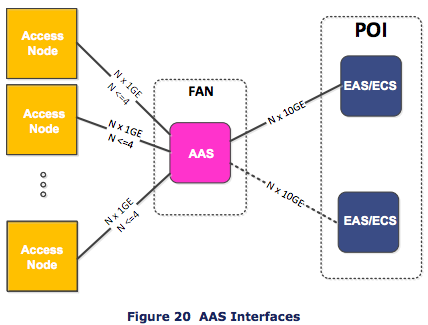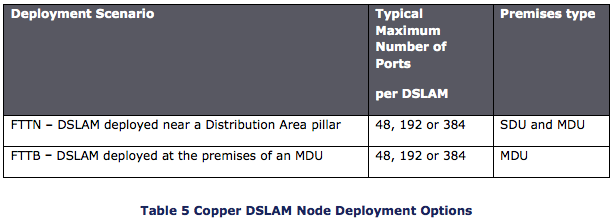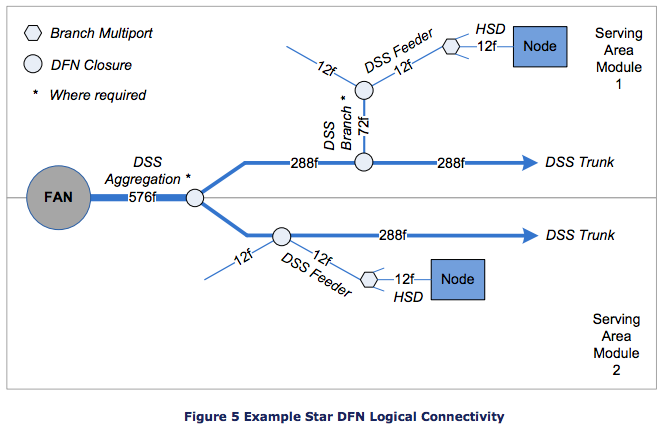“With a measly 2Gbps backhaul per node you can forget about 4K Netflix. FTTN is going to be no different to the current Telstra RIMs”
(analysis) Customers on the shiny new NBN FTTN and FTTB networks may find themselves left with slow and congested speeds for decades because of short-sighted network design decisions made by the company.
Analysis of the latest Network Design Rules for the NBN, dated 30th June 2015, reveals that customers may only be able to reach a committed information rate (CIR) of roughly 5Mbps on a fully loaded node – far short of the 25 mbps that popular internet streaming service Netflix says is required for 4K video streaming and also falls short of the Vertigan panel’s recommendation that 50% of Australians will only need 15 Mbps by 2023.
The calculation:
nbn™, the company responsible for building the NBN, currently deploys 4 Point-to-Point fibres from the Fibre Access Node (similar to an “exchange”) to the NBN node where the DSLAM equipment is located. However, it also goes on to say that only 2 of the 4 fibres will be used for connectivity, with the other 2 reserved for “future growth or migration activities”.

Each of the fibres will deliver a 1Gbps ethernet connection back to the NBN Access Aggregation Switch (AAS), totaling to an effective 2Gbps ethernet connection between the node and the Fibre Access Node – or 4Gbps if all 4 allocated fibres are used.

Also according to the document, depending on the DSLAM configuration, each of nbn™’s FTTN and FTTB nodes are capable of connecting up to 384 premises.

Taking all of the above into consideration, in a worse case scenario on a fully-loaded node at peak hour, customers may only reach 5 Mbps if all traffic was distributed evenly:
| Number of DSLAM ports | Fibres used for uplink | Entire node’s effective uplink (Mbps) | Committed Information Rate (CIR, Mbps) |
|---|---|---|---|
| 48 | 2 | 2000 | 41.7 |
| 192 | 2 | 2000 | 10.4 |
| 384 | 2 | 2000 | 5.2 |
Network design wreaks havoc for binge watching season
If a mere 21% of all premises connected to a node starts streaming a 4K stream on Netflix, the node will exceed its capacity.
As many saw with the launch of popular internet TV streaming service Netflix in Australia, telecommunications companies failed to predict the demand of the service leading to heavy network congestion across Australia’s major ISPs.
For some of Netflix’s popular productions like House of Cards and Orange is the New Black, the company releases all the episodes of in their series at once. This results in a brand new network usage “profile” that Australian ISPs and network providers like NBN have seen little of before… where customers continuously watch (binge) and subsequently stream content for hours on end.
If a mere 21% of all premises connected to a node starts streaming a 4K stream on Netflix (21% of 384 at 25 Mbps), the node will exceed its capacity. This will leave zero bandwidth for the remaining 75% of customers potentially connected to the node.
While it can be expected that NBN’s QoS (quality of service) management will balance the load to prevent a small number of customers hogging the entire link, all customers across the board will suffer from congestion issues because of it.
With the increasing prevalence of Internet TV in Australia, the limited design of the NBN FTTN and FTTB networks will have lasting implications on what Australians will be able to do with their Internet connection.
FTTP upgrade path, uncertain
nbn™ has also indicated that they will only deploy 12 fibres up to an NBN node, making it difficult to upgrade an NBN FTTN or FTTB node area to fibre without significant downtime or extensive civil works.

Assuming a fully loaded 384 port NBN node is to be upgraded from FTTN to FTTP, with 4 fibres already allocated to the FTTN DSLAM for connectivity back to the Fibre Access Node, 8 fibres are remaining to potentially deliver fibre services all the way to the customer’s premises.
However, the 8 fibres will only be capable of delivering GPON services (the FTTP technology that the NBN currently uses) to a maximum of 256 premises (each fibre can be split into 32 premises, 8 × 32 = 256).
Without causing massive disruption to all customers connected to the current node, it may not be possible to transition to FTTP on high-capacity nodes other than by rolling out the network from scratch again.
This means that even if nbn™ decides to upgrade the network, they will likely continue using copper-based technologies for the years ahead to avoid large capital costs again.
(edit) further reading: You can read nbn’s side of the story in their blog post here.
